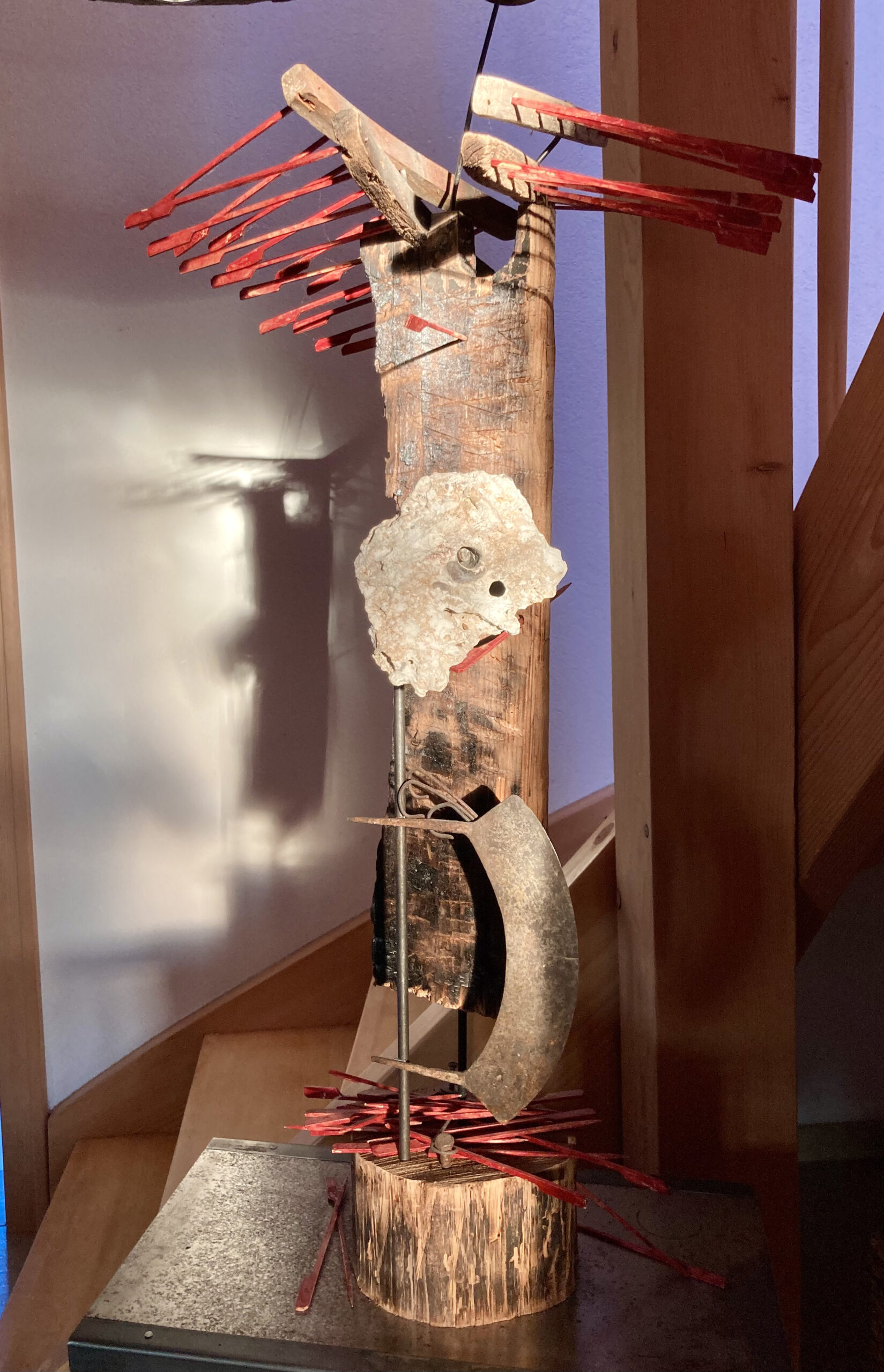Lepanto Galeere
A.18
Starting Price
€ 5’700
Untergang und Verwandlung in der Tiefe, Begegnung mit Poseidon
Sinking and transformation in the deep, an encounter with Poseidon
h: 106 cm
w: 48 cm

Untergang und Verwandlung in der Tiefe, Begegnung mit Poseidon
Sinking and transformation in the deep, an encounter with Poseidon
h: 106 cm
w: 48 cm
Der Stein mit dem Gesicht des Poseidon lag am Strand bei Lepanto,
dem heutigen Nafpaktos, Griechenland.
Im Jahre 1571 fand hier die letzte große Seeschlacht mit Galeeren statt.
Eine Allianz von Venezianern, Spaniern, Maltesern gewann gegen die Türkische Flotte.
35.000 Menschen starben an einem Nachmittag. Die Ruderer waren angekettet.
Die Admirale des Sultans wurden geköpft.
Der Sultan zu Hause im Palast lies ausrichten: Ihr habt mich nur am Bart gekitzelt.
Miguel Cervantes, der spanische Dichter des „Don Quichote“ verlor in diesem Kampf einen Arm.
Das Leben und Sterben auf den Galeeren war grausam. Historiker sagen, bei richtig stehendem Wind konnte man so eine Galeere mit 200 Ruderern riechen, bevor sie am Horizont sichtbar wurde.
Soweit zur Geschichte der Galeeren.
Jetzt erreichen wir den symbolischen Bereich der Kunst:
Cy Twombly hat in München im Museum Brandhorst einen riesigen Gemälde-Zyklus „Lepanto“.
Das Abendlicht an der Wand ruft William Turners „Brennende Schiffe“ hervor.
Ich nehme altes Teakholz, ein verkohltes Brett, und den griechischen Stein. Ich muß ihn lange auskochen, denn er stinkt nach verwesenden kleinen Meerstieren, die einmal in seinen Löchern gelebt hatten. So gehe ich um mit dem Thema Tod, und erreiche etwas Unerwartetes:
im Untergang absinkende Ruder, der Steinkopf des Poseidon in der Tiefe.
Noch weiter unten: Ist das ein Säbel – oder bläht sich ein Segel zur Fahrt in die Anderswelt?
Ich denke an ein Seelen-Schiff der alten Ägypter.
Rätselhaft zeigt sich etwas Tröstliches: Begrüßt ein Gott die Seelen, die ihre irdische Fahrt überstanden haben?
Das Bild ist vielschichtig, springt um: Wie ein atmender Brustkorb mit Rippen, schön und kräftig,
in Bewegung.
Oder auch: 58 Ruder … im Alter von 58 Jahren wurde der Künstler aus der Galeere seines Lebens befreit.
Rätselhaft.
Es zeigt sich hier große Ruhe und Freiheit, nach allem.
The stone with the face of Poseidon was on the beach near Lepanto,
today’s Nafpaktos, Greece.
In 1571 the last great naval battle with galleys took place near Lepanto.
An alliance of Venetians, Spaniards, Maltese won against the Turkish fleet.
35,000 people died in one afternoon. The rowers were chained.
The Sultan’s admirals were beheaded.
The Sultan at home in the palace let out: You have only tickled my beard.
Miguel Cervantes, the Spanish poet of „Don Quixote“ lost an arm in this battle.
Life and death on the galleys was cruel. Historians say that if the wind was right, you could smell such a galley with 200 oarsmen before it became visible on the horizon.
So much for the history of galleys.
Now we reach the symbolic realm of art:
Cy Twombly has a huge painting cycle „Lepanto“ in Munich at the Brandhorst Museum.
The evening light on the wall evokes William Turner’s „Burning Ships“.
I take old teak, a charred board, and the Greek stone. I have to boil it for a long time, because it stinks of decaying little sea animals that had once lived in its holes. This is how I deal with the subject of death, and achieve something unexpected:
Oars sinking in the sinking, the stone head of Poseidon in the depths.
Still further down: Is that a sword – or is a sail billowing to sail to the Otherworld?
I think of a soul-ship of the ancient Egyptians.
Enigmatically, something comforting appears: does a god greet the souls who have survived their earthly voyage?
The image is multi-layered, jumps around: Like a breathing ribcage, beautiful and strong,
in motion.
Or also: 58 oars….. at the age of 58, the artist was freed from the galley of his life.
Enigmatic.
Here is experience of great peace and freedom, after all.